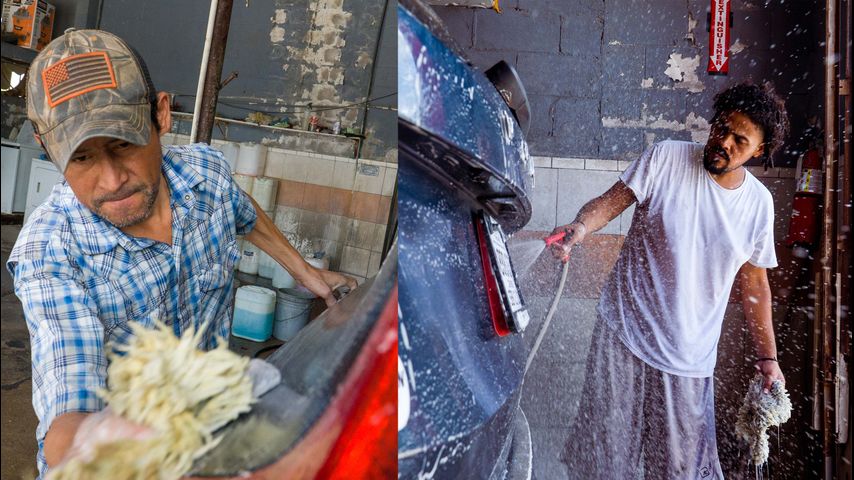Car washes may be first businesses hit by water shortage restrictions
The situation is getting worse for the cities in the Valley that source water from the Rio Grande. The supply of water is getting scarce. As reservoirs dry up at Falcon Lake and Amistad, that will trigger drought contingency plans, which will be different for each Valley city. Meaning, the extra things Valley residents do with water can be impacted.
In Weslaco, at the Los Cuates car wash, using water is a livelihood for Jorge Minez and the men he works with.
The water at car washes like these— even here where it's limited to handwashing to keep the water bill low— could be impacted when drought contingency plans take effect as water levels keep dropping.
"I think, yeah, it's kind of time to get serious," said Jim Darling, former mayor of McAllen and the chair of the Region M Water Planning Group.
Darling says they're now working to make sure all cities have drought contingency plans on file. The combined reservoir capacity on July 6 was just over 25 percent.
Darling says once it drops below 25 percent, Valley residents will start seeing restrictions, like the use of sprinklers, car washing, even commercial operations.
"I know at some stages, they're going to go to no commercial car washes, and those kind of things,” Darling said. “So, it's important that we know we're affecting peoples' livelihood."
Darling says limits on commercial operations could come when reservoir capacity reaches 20 percent. But first, there will be limits on lawn watering; first to hours of the day or number of days per week you're allowed as water use in the Valley continues while water supply diminishes.
"Absolutely we have room to work with because they say in McAllen, for instance, the estimate is up to 60 percent of the water goes on your lawn to irrigate, and so only 40 percent goes in the house," Darling said.
Lower supplies of water, as Valley cities appear to be heading toward limitations.
"I need the money for my rent, to pay my rent," said Jorge Minez. "My food, everything."
Every day, the Valley has less and less water at its disposal.
Darling says, in his opinion, Valley cities aren't moving fast enough to limit use or even start voluntary calls for limits.
Darling says he expects the Valley will have lower than 25 percent capacity at the next update, adding that the International Boundary and Water Commission and its sister agency in Mexico are disagreeing over some of the facts.
"There was a little dispute between CILA, the Mexican side, is how much is in the reservoir, obviously that's not easy to ascertain. There's sinkholes and all kinds of different things," Darling said. "So they’re trying to get the number that different entities, both Mexico and the United States agree on what the level was because it triggers things in Mexico, triggers things for farmers, and triggers things for cities so it’s important to get the right number.”
Channel 5 News reached out to IBWC for their account on what's going on.
Read their statement below:
“We are investigating data inconsistencies that affect water accounting. Given the low Reservoir levels, we want to ensure the numbers we are reporting are accurate.”




